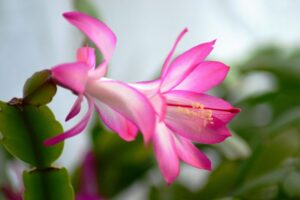If you’re searching for information about harvesting leeks, you’ve come to the right place. This guide will walk you through everything you need to know to ensure a successful harvest.
When to Harvest Leeks
Timing is crucial when it comes to harvesting leeks. Generally, leeks are ready to harvest approximately 90 to 120 days after planting, depending on the variety. You can tell it’s time to harvest when the base of the leek is about 1 to 2 inches in diameter. Here are some additional signs to look for:
Color Change: Mature leeks will have a vibrant green color on the tops and a pale white or light green color on the stalks.
Firmness: The leek should feel firm to the touch. If it’s starting to wither or feels soft, you might need to harvest soon.
Fallen Leaves: If the outer leaves start to yellow or fall off, it can indicate that the leek is ready for harvesting.
How to Harvest Leeks
Harvesting leeks is a straightforward process but requires some care to avoid damaging them. Here’s how to do it:
Gather Your Tools: You’ll need a garden fork or spade, a pair of pruning shears or a sharp knife, and possibly some gloves for protection.
Loosen the Soil: Start by gently loosening the soil around the base of the leek using your garden fork. This will help ease the leek out without breaking the stalk. Be careful not to damage neighboring plants.
Remove the Leek: Once the soil is loose, grip the leek at the base and pull it out of the ground. If you’re having difficulty pulling it free, gently wiggle it back and forth to loosen it further.
Trim the Leaves: After you’ve harvested the leek, use your pruning shears or knife to trim the long green leaves down to about 6 inches. This makes them easier to store and prepares them for cooking.
Clean and Store: Clean the leeks by rinsing them under cool water to remove any soil. You can store leeks in a perforated plastic bag in the fridge for up to two weeks. They can also be stored in a root cellar or a cool, dark place if you’ve harvested a large quantity.
Tips for Successful Leek Harvesting
Harvest in Dry Weather: It’s best to harvest leeks on a dry day. Wet soil can make the process messier, and leeks are more prone to rot if stored wet.
Harvest Before Frost: If you’re in a region with frost, be sure to harvest your leeks before the first hard frost hits, as freezing temperatures can damage them.
Leave Some in the Ground: If you want to enjoy fresh leeks throughout the winter months, consider leaving some leeks in the ground. They can continue to grow slowly but remain dormant in colder temperatures.
Culinary Uses for Leeks
After harvesting, it’s time to enjoy your delicious leeks in the kitchen. They can be used in a wide range of recipes, from soups and stews to stir-fries and salads. Here are a few ideas:
Potato Leek Soup: A classic dish that highlights the mild flavor of leeks.
Leek and Cheese Quiche: A delightful combination that makes for a great brunch option.
Sautéed Leeks with Garlic: A simple yet flavorful side dish.
Conclusion
Harvesting leeks may seem daunting at first, but with the right timing and techniques, you can successfully enjoy this versatile vegetable right from your garden. Whether you’re incorporating them into your favorite recipes or simply savoring their fresh taste, well-harvested leeks are sure to please your palate. Happy gardening, and enjoy your harvest!





